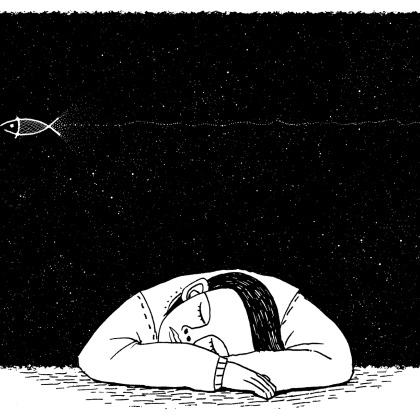The Search
How to Find Buried Treasure in Minecraft
This Minecraft tutorial explains how to find Buried Treasure with screenshots and step-by-step instructions.
Starting in the Aquatic Update, there are shipwrecks, Buried Treasure Maps and Buried Treasure. Let's explore how to find Buried Treasure in Minecraft.
[subscribe button] Subscribe
Steps to Find Buried Treasure
1. Find a Shipwreck
First, you need to find a shipwreck in Minecraft. A shipwreck looks like the ruins of a sunken ship and is found in Ocean, River and Beach biomes. Shipwrecks usually spawn underwater, however in rare cases, you may find a shipwreck on land in a Beach biome.
This is what a shipwreck looks like:
[how to find buried treasure]
How to Find Someone
Author Info
Explore this ArticleFinding Someone OnlineFinding Someone Through Alternative MeansFinding a Missing PersonArticle SummaryQuestions & AnswersRelated ArticlesReferences
In the Information Age, everybody leaves a digital trail. And if the person doesn't have one, well, let's look harder. With Google, Facebook, Tumblr, LinkedIn, and countless other social media sites, whoever you're looking for is bound to have some of their personal information online. Although sometimes creepy, it's easy to follow this trail all the way back to the person you've been looking for.
Method1
Finding Someone Online
[Image titled Use Time Management in the Workplace Step 7]
1
Write down all the vital information you know about this person. Trying to find somebody using their name alone will probably cast too wide a net. Make your hunt more targeted by including information such as:
Full name and nickname
Age and date of birth
Schools attended
Hobbies, likes and dislikes, team sports (especially at schools)
Places of work
Old addresses and phone numbers
Friends, family members, and neighbors
[Image titled Not Be Weird at Work Step 7]
2
Search for variations on the person’s name and/or nickname. Every time you find a page or clue that suggests other parts of the profile, write it down in the profile. For example, you might find "Bea Harrington" mentioned in a newspaper in Albany, NY and a “Beatrice R. Harrington” in a brochure in Dallas, TX. Write down both of those locations in the profile with question marks. If you find another indication that the person with that name is in one of those locations, put a tick next to that location every time.
To pull up exact matches only, put quotation marks around each version of their name. (If you’re unsure as to spelling, don’t use quotation marks.) Plug it into major search engines (Google, Yahoo, etc.); the more variations and engines you try, the more info you're likely to find.
If you suspect that the person has gone to another country, especially one where a different language is spoken, try a foreign search engine. Many major search engines have different versions for different countries (Australia, China, etc.). Try those.
When searching for a woman who might have gotten married and changed her name, try adding "né" in the search box with every variation (née is a word used to indicate that the person is using their maiden name).
[Image titled Reap What You Sow in Life Step 10]
3
Vary your online searches by including other details about the person. After you’ve done a full sweep on the person’s name and nickname, do a second with a slight modification such as their hometown, age, high school, former workplace, etc. Repeat as necessary.
If you know of a particular website this person may be associated with, you can search within the site on Google with something like "site: stanford.edu Beatrice Harrington" to focus on those results.
[Image titled Act Like a Normal Teenager Step 11]
4
Use a search engine designed specifically to find people. These allow anyone to perform people searches. Try ZabaSearch.com or Pipl.com, for example. Use filters to narrow your results when applicable.
Lost Trekkers is another place to find lost people. Choose the country, mode of transport or other option, and leave the details in the relevant forum. You will need to register to place an ad. You can search through existing posts to see who might be looking for you or the same person you're looking for.
[Image titled Lose Weight While Living a Busy Life Step 10]
Method1
Determining Electron Number in Neutral Atoms
[Image titled Find Electrons Step 1]
1
Obtain a periodic table of elements. This is a color-coded table that organizes all the known elements by atomic structure. Each element has a 1, 2, or 3-letter abbreviation and is listed along with its atomic weight and atomic number.[1]
Periodic tables can easily be found in chemistry books as well as online.
[Image titled Find Electrons Step 2]
[Image titled Find Electrons Step 3]
3
Find the atomic number of an element. The atomic number appears in the upper left-hand corner or centrally above the element symbol in the square. The atomic number defines the number of protons present in that particular element.[3] Protons are the particles in an element that provide a positive charge. Because electrons are negatively charged, when an element is in its neutral state, it will have the same number of protons as electrons.
For instance, boron (B) has an atomic number of 5, meaning that it has 5 protons and 5 electrons.
Method2
Determining Electron Number of Positively/Negatively Charged Ions
[Image titled Find Electrons Step 5]
1
Identify the charge of the ion. Adding and removing electrons from an atom does not change its identity, but it changes its charge. In these cases, you now have an ion, such as K+, Ca2+, or N3-. Usually, the charge is expressed in a superscript to the right of the atom abbreviation.
Because an electron has a negative charge, when you add extra electrons, the ion becomes more negative.
When you remove electrons, the ion becomes more positive.
For example, N3- has a -3 charge while Ca2+ has a +2 charge.
[Image titled Find Electrons Step 6]
2
Subtract the charge from the atomic number if the ion is positive. If the charge is positive, the ion has lost electrons. To determine how many electrons are left, subtract the amount of charge from the atomic number. In this case, there are more protons than electrons.
5
Search for the person’s last known cell phone number. Since cells are mobile and their numbers can be transferred to new phones or providers, people’s cell numbers are much less likely to change them their home numbers. Though reverse-tracking a cell phone number usually costs money, you might get lucky by simply searching for the number on various search engines. If the person has listed or advertised their phone number anywhere on the Internet, it's likely to turn up. Put the entire phone number in quotes and experiment with hyphens, periods, and parentheses to separate the numbers.
In the US, a phone’s three-digit area code can be traced back the location where a cell phone was issued, which might help you pinpoint another area where the person has lived or worked. The next three digits of the number are the exchange area; most exchange areas cover a small town, or a section inside a city, say a 10 x 10 block area. You can contact the phone companies in that area, or get a phone book from the area, and make a map of the exchange area, based on like exchanges in the book. If you have a phone number and ZIP code, you can cross over the maps and get an even smaller area to search.
Find the graves of ancestors, create virtual memorials or add photos, virtual flowers and a note to a loved one's memorial. Search or browse cemeteries and grave records for every-day and famous people from around the world.
2. Look for a Map Chest
Each shipwreck can have up to 3 chests, depending on the size of the shipwreck - Map Chest, Treasure Chest and Supply Chest.
2
Find the element in question on the periodic table. The elements are ordered by atomic number and separated into three main groups: metals, non-metals, and metalloids (semi-metals). They are further grouped into families including alkali metals, halogens, and noble gases.[2] Every column of the table is called a group and every row is called a period.
If you know the details of your element, such as what group or period it is in, it will be easier to locate.
If you don’t know anything about the element in question, just search the table for its symbol until you find it.
How to Find Electrons
Co-authored by Bess Ruff
In this Article:Article SummaryDetermining Electron Number in Neutral AtomsDetermining Electron Number of Positively/Negatively Charged IonsCommunity Q&AReferences
All basic elements are made up of electrons, protons, and neutrons. An electron is a negatively charged particle that makes up part of an atom. A fundamental concept in chemistry is the ability to determine how many electrons an atom contains. By using a periodic table of elements, this can easily be determined. Other important concepts involve how to find the number of neutrons and valence electrons (number of electrons in its outermost shell) in an element.
For example, Ca2+ has a +2 charge, therefore, it has 2 fewer electrons than a neutral calcium atom. Calcium’s atomic number is 20, therefore this ion has 18 electrons.
[Image titled Find Electrons Step 7]
3
Add the charge to the atomic number if the charge is negative. If the charge is negative, the ion has gained electrons. To determine how many total electrons there are, add the amount of charge to the atomic number. In this case, there are fewer protons than electrons.
For example, N3- has a -3 charge which means it has 3 more electrons than a neutral nitrogen atom. Nitrogen’s atomic number is 7, therefore this ion has 10 electrons.











Dodaj komentar
Komentiraj